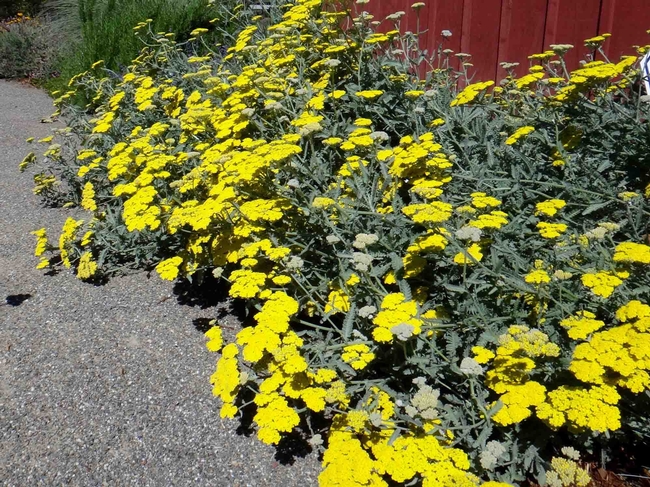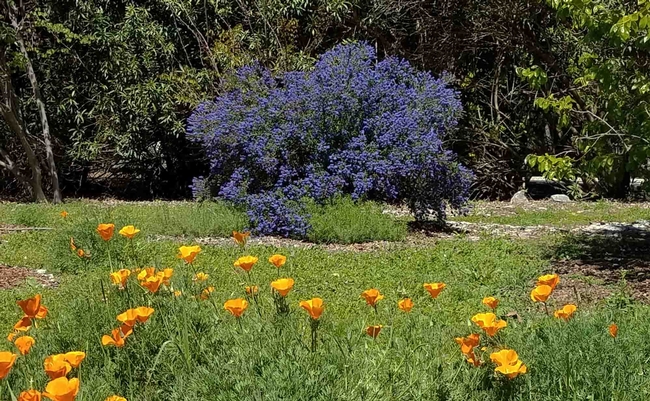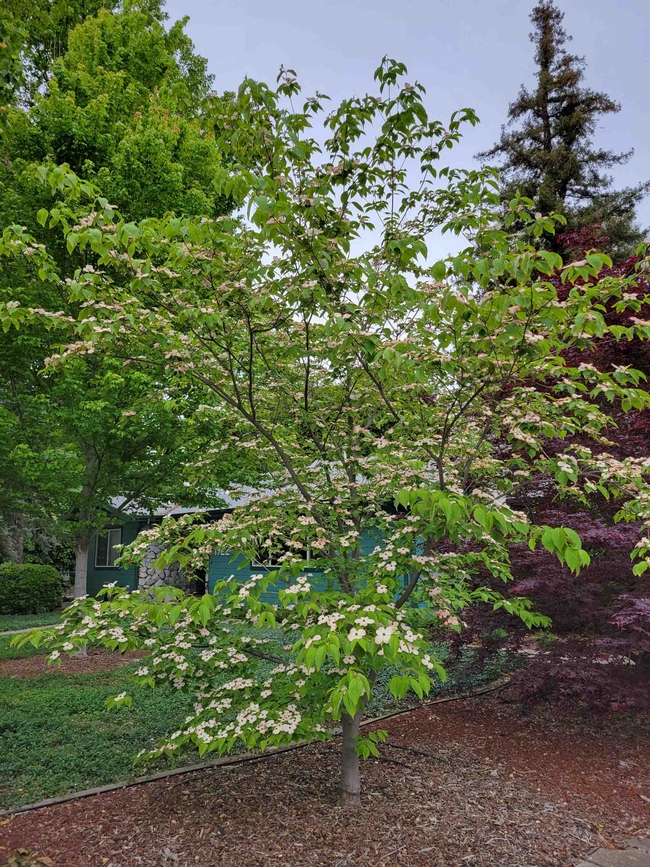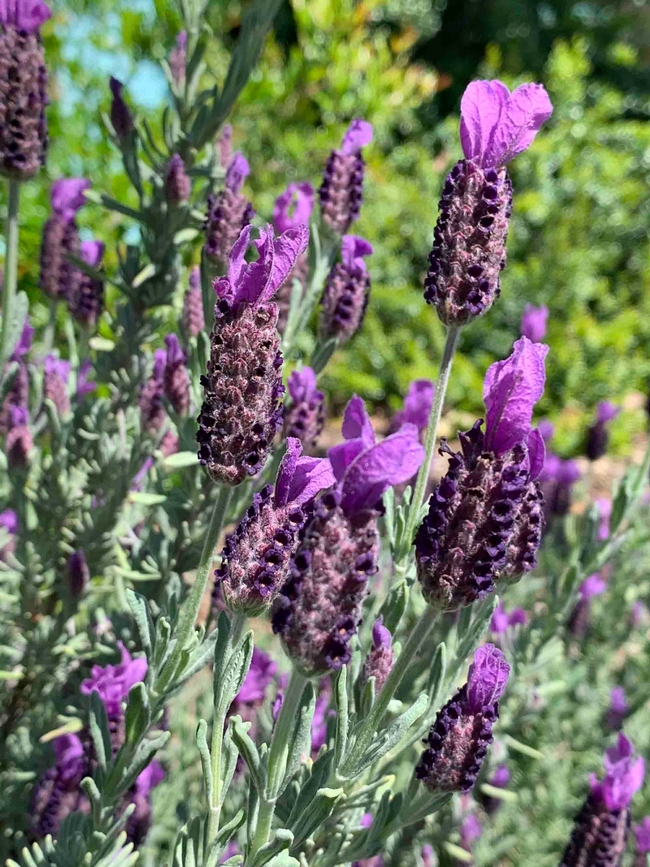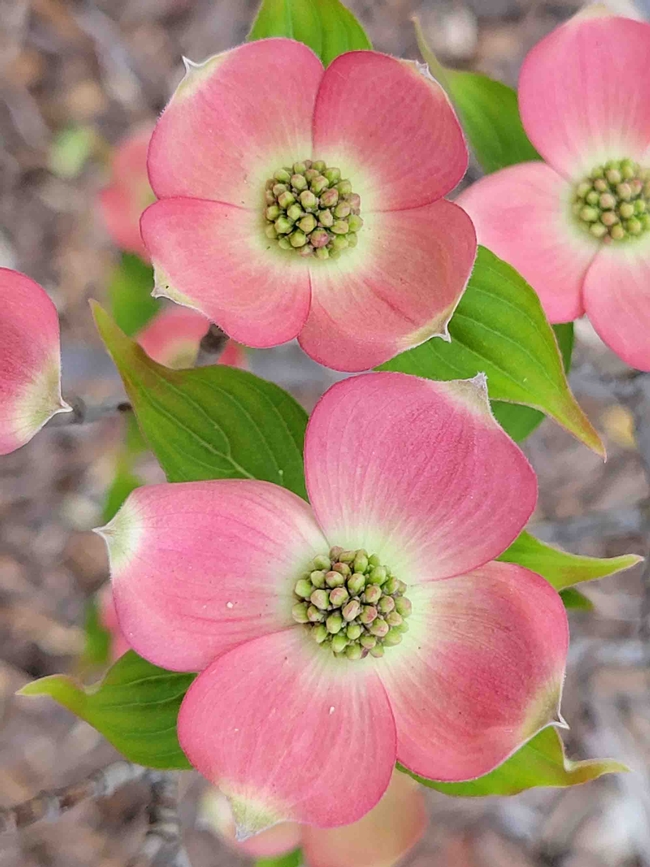The devastating Camp Fire of 2018, along with the numerous fires North State residents have experienced since then, have led many of us to focus on creating a defensible fire-resistant landscape around our homes. As noted in this column last Friday, the key to establishing defensible space is to utilize plants that are fire resistant and judiciously space them both horizontally and vertically.
Moonshine Yarrow, Brent McGhie
Poppies and Concha ceonothus, Jeanette Alosi
Shrubs that are fire resistant include ceanothus, butterfly bush, spirea, rose of Sharon, Oregon grape, lilac, mock orange, potentilla, forsythia, cotoneaster, island bush poppy, currants, camellia, azalea, monkey flower and viburnum. Aloe and other succulents are generally considered fire-resistant but avoid succulents such as ice plant that produce mats of flammable dry material.
Stellar Pink Dogwood in bloom, Jeanette Alosi
Highly flammable plants often have an excess of fine dry or dead material and contain volatile waxes, terpenes, or oils. Their sap is gummy or resinous and aromatic. They may have loose, papery bark as well. Examples of flammable plants are sagebrush, conifers (cedar, pine, juniper, fir, Italian cypress), broom, rosemary, eucalyptus, palms, feather and fountain grasses and dry annual grasses. These plants should be avoided when planning a firewise landscape; if they already exist in a landscape, consideration should be given to removing them.
Spanish lavender, Laura Kling
UC Master Gardeners of Butte County are part of the University of California Cooperative Extension (UCCE) system. To learn more about us and our upcoming events, and for help with gardening in our area, visit our website. If you have a gardening question or problem, email the Hotline at mgbutte@ucanr.edu (preferred) or call (530) 538-7201.
